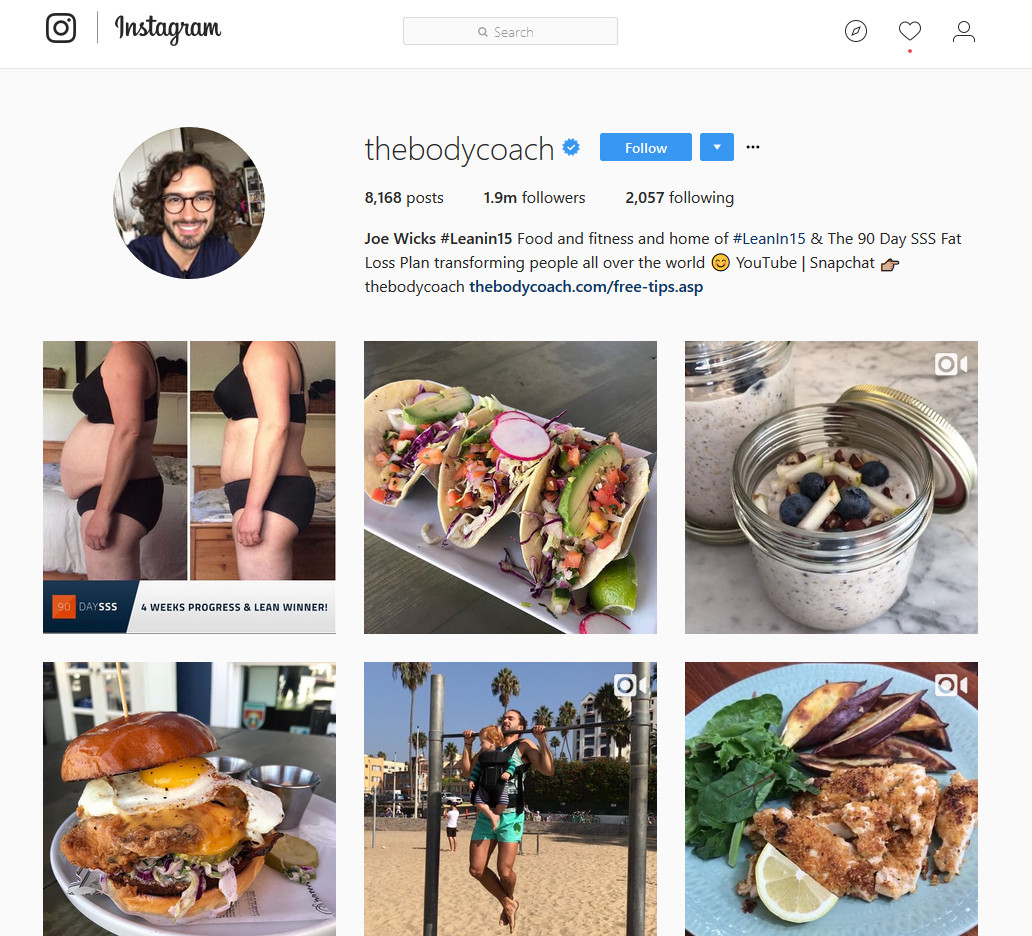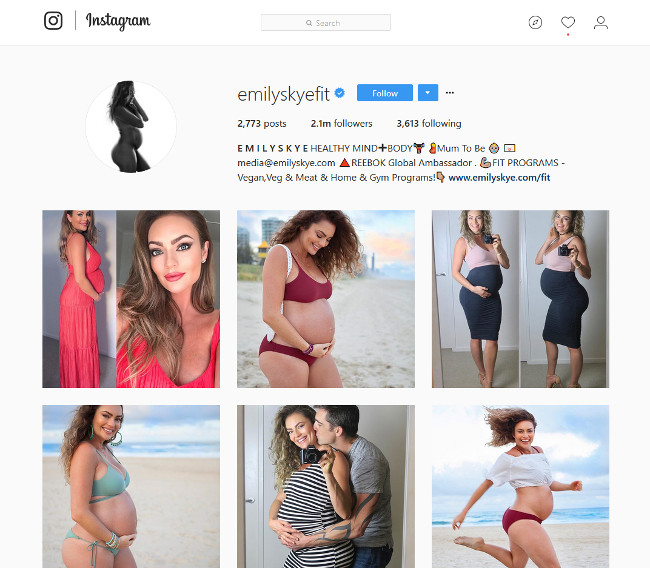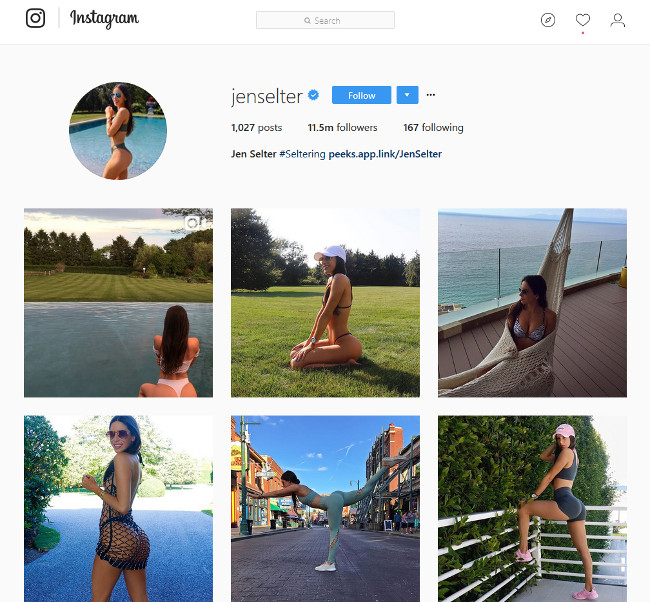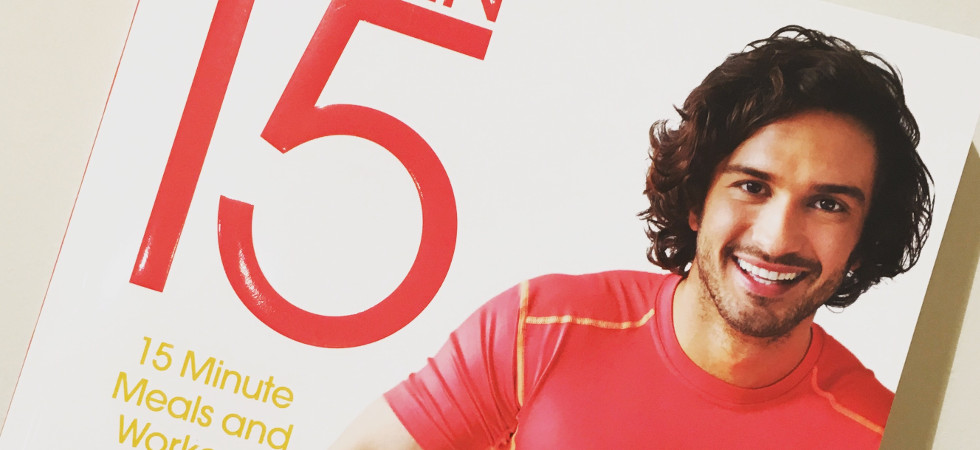We are amidst a fitness revolution that can’t be avoided. Our social media feeds are swimming with images of the perfect body which has led to a change in attitudes towards exercise, fitness and nutrition. Social apps such as Facebook and Instagram have provided personal trainers and fitness enthusiasts with a platform to offer advice and support for others trying to reach their fitness goals.
Instagram and other similar apps have become people’s go-to platform for inspiration and motivation, whether you are working towards a bikini body, training towards your next bodybuilding competition, or simply trying to lose weight and get in shape. Where there was once a time that we looked towards print media for the ideal body inspiration, Instagram has now taken over.
A combination of a good workout routine and clean diet sets you on the right path toward your goals. Generally, for those looking to lose weight to mirror the ‘Insta-body’ they see on their social media feeds, you’ll need to follow a calorie deficit diet which comprises of carbohydrates, lean protein and essentials fats, as well as a carefully planned workout plan.
Despite some traditional attitudes, weightlifting is one of the best ways to lose weight. Luckily, social media has helped shift people’s attitudes towards weightlifting, from the idea that lifting weights will make you big and bulky towards the idea that weights are the best way to get into shape. You don’t get sculpted curves and abs from jogging on the spot!

How powerful is Instagram?
With over 700 million monthly active users, there has been over 40 billion photos shared on Instagram to date – that is impressive! It shows just how popular the social app has become. It seems everyone wants a slice of the action. But Instagram has become more than just a personal photo sharing app now – it has become a platform for companies and organisations to gain more coverage for their brand and products.
It’s also a platform that personal trainers, fitness enthusiasts and dieticians can capitalise upon. Diets, workouts and workout supplements are increasingly pushed out across social media, as public figures and fitness influencers shout about their favourite routines, diet plans and choice of protein bars, drinks and supplements.
Our feeds are showered with images of the ‘ideal’ body, from sculpted curves and defined abs, to big booties and solid biceps. Whether it’s someone showing off their achievements or using an image as inspiration, there is no way of avoiding it – we are constantly encouraged to work out and eat healthy. Instagram is powerful – we take notice of the messages we see on our feeds.

“The influence of social media, in particular Instagram, on the fitness industry has been dramatic! The industry has seen exponential growth over the past few years, credited in large to the rise of social influencers, bloggers and fitness professionals using the popular platform to inspire, motivate and educate,” according to Dan Lambert, a personal trainer at MaxiNutrition.
The social media app is only as influential as the amount of active users it has – and as Instagram has so many daily active users, it’s no wonder it has come to have such a big influence over our lives. If you consider that one single person could have thousands and thousands of followers, that one person can post a single picture and it will reach the eyes of thousands of people. What’s even more impressive is that the use of a hashtag can reach an even bigger audience.
Joe Wicks is just one fitness enthusiast that found his fame and success through social media platforms such as Instagram and YouTube. He is known for his quick 15 minute workouts, 15 minute healthy meals and as a fitness influencer. He aims to help people reach their fitness body goals. Also known as ‘The Body Coach’, the fitness figure has a huge 1.9 million followers on Instagram. That means for every workout video or healthy food recipe that he posts on his account, it is guaranteed to reach 1.9 million people, not to mention anyone who is looking for any trending hashtags that have been used.
Powerful hashtagging
Hashtags are brilliant for attracting Instagram users towards your posts. As we look toward Instagram for inspiration and support to help us reach our ideal bodies, not only do we ‘follow’ our key influencers but we can search for particular hashtags. A hashtag is used on a post to link it toward a relevant topic. Example hashtags include #bodybuilding, #instafit, #fitness, #bodygoals and #nutrition. When looking for help or inspiration, using these hashtags we can find relevant posts that are likely to help. Hashtags therefore help posts gain more coverage and exposure.

Key Influencers
Emily Skye is one of 2017’s key fitness influencers across social media. The Australian began her social media following back in 2011 and now has 2.1 million followers on Instagram. Skye encourages people across the globe to eat clean and follow her fitness programmes. With a predominantly female following, her programme is made up of three phases – full body, legs and butt and then abs and core. She suggests a five-day sculpting workout.
Jennifer Selter, most commonly known for her ‘booty-boosting’ regime, has a whopping 11.5 million Instagram followers – just on her personal account. The fitness influencer runs an impressive six Instagram pages. An example of Selter’s booty workout is as follows:
Donkey Kicks – 15 reps each leg
Fire Hydrant – 1 set of 15 reps each leg
Chair Kick – 10 reps each leg
Squat Pulse – 3 sets of 10-15 reps
Squat Kick – 3 sets of 10 reps
MaxiNutrition ambassador and personal trainer, Dan Lambert is a man who knows a thing or two about working out. For him, “the growth of Instagram has driven the growth of my business in ways I would never have imagined. Starting out as a struggling part-time trainer – I used social media to tell my clients stories, show off their results and advertise my services (for free!), which ultimately led to the rapid expansion of my part-time ‘hobby’ into a lucrative business!”
He also adds that it is not just his business that has been influenced by social media platforms, “whether you are interested in bodybuilding, booty-building, CrossFit, sports or weight loss, there are thousands of influencers catering specifically to you – creating imaginative workouts, posing with their most recent culinary creations or uploading the motivational gym selfie! Even as a fitness professional, I often find myself admiring the ‘Insta-bods’, striving to emulate their incredible physical creations and naturally comparing myself to these ‘digital’ physiques.”
However, we must remember that the images we see on social media are ‘digital’. Whilst fitness professionals and influencers are great for inspiration, Dan Lambert reminds us that we should all take what we see on social media with ‘a pinch of salt’ as “Instagram profiles are ultimately digital-avatars” and “the demand to be ‘in shape’ is progressively rising with every ‘refresh’ – driven by the millions of profiles showing off year-round shredded abs, 24/7 pumped arms and gravity defying ‘squat booties’” which is often an unrealistic extreme.
Image at the very top of the article credit: charliebloggs.com






















